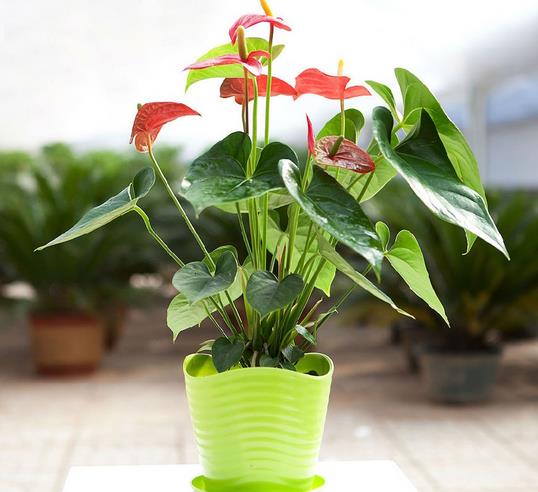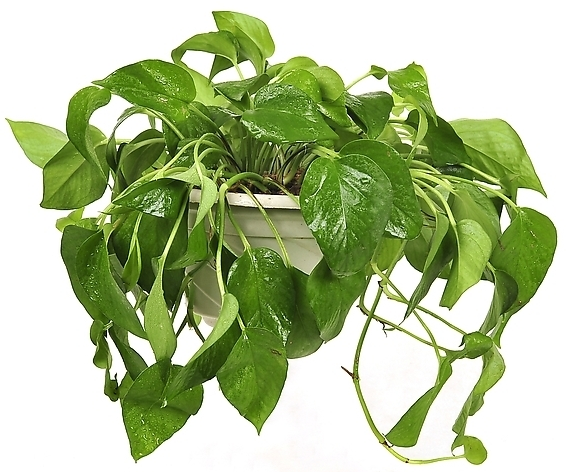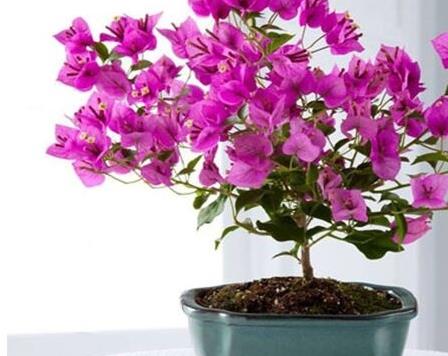Hydroponic Anthurium andraeanum cultivation method makes your indoor potted plant more beautiful
Anthurium andraeanum is not only a plant of Araceae, but also a kind of hydrophilic plant. But hydroponics is a little more difficult. So how to grow Anthurium andraeanum in hydroponic culture? How much do you know? Next, let me give you a detailed introduction to how to grow Anthurium andraeanum in water culture.
Culture method of Anthurium andraeanum in hydroponics
The cultivation method of hydroponic Anthurium andraeanum needs to change water regularly and clean the roots of flowers, correctly select and make good use of nutrient solution, and flexibly master it according to the environmental conditions of different seasons, which is the key to the cultivation of hydroponic Anthurium andraeanum flowers.
The length of time to change the hydroponic nutrient solution can be determined according to the temperature of different seasons and the growth of flowers.
In spring and autumn, under the condition of 15 ℃ to 28 ℃, the nutrient solution of hydroponic flowers with strong branches and leaves was changed every 7 to 10 days. First, take out the hydroponic flowers, pour out all the used nutrient solution (which can be used to irrigate potted flowers), clean the utensils, remove the withered roots and rotten roots, rinse the roots, replace the new nutrient solution, and put it back into the utensils for static hydroponics.
When the temperature is more than 30 ℃, most flowers are dormant or semi-dormant, and their physiological metabolism is slow. At this time, we can stop hydroponics and use tap water to cultivate them. It also takes 7 to 10 days to change new water, clean utensils, remove withered roots, rinse roots, and re-hydroponic culture. When the temperature dropped below 28 ℃, it was cultured in nutrient solution. Most of the foliage flowers are suitable for hydroponic culture. When the growth is less than 10 ℃, the growth stops and there is no need for hydroponic culture with nutrient solution. Change fresh tap water every 15 to 20 days, combined with changing water, cleaning utensils, and flushing roots. Because the water temperature is low in winter, germs will not multiply in large numbers, and flower roots will not rot easily. But some of the aged roots are dead and should be removed when washing.
As for the nutrient solution used, the flower market has a variety specifically for mixed culture of flowers and fish, called "flower fish co-culture".
Anthurium andraeanum root breathing is very strong, directly into the water can easily hinder its breathing. The best way is to use matrix, and the best matrix is ceramsite. As the root of Anthurium andraeanum is fleshy and the leaves are extracted from the root, it is generally easy to customize orchid + stone + easy method, not easy to send leaflets. On the other hand, ceramsite is light in texture and sufficient in space, which makes it easy to pull out the lobules. The Anthurium andraeanum hydroponically cultivated in my office is cultivated with ceramsite. It has been cultivated for 2 years, all of which are 3-4 flowers.
To hydroponically cultivate Anthurium andraeanum with ceramsite, first of all, wash the roots, trim the old roots, residual roots, and go to flowers. Then put the plant into a container. Fill the ceramsite, then dilute the rooting powder in proportion, spray the ceramsite, be careful not to accumulate too much water below, and pour out if there is too much water. After a long wait, you will be pleasantly surprised to find that the thick and white flesh roots of Anthurium andraeanum grow on all sides, all close to the edge of the container. Congratulations at this time, even if a hydroponic Anthurium andraeanum is completed, the next thing to do is to add nutrient solution regularly to protect its growth.

Hydroponic Anthurium andraeanum cultivation method makes your indoor potted plant more beautiful
Points for attention in family culture of Anthurium andraeanum
The main contents are as follows: 1. Selection of cultivation medium. In the process of standardized large-scale production, the matrix used by me is mainly peat soil plus a small amount of perlite with coarse river sand, and a small amount of flower arrangement mud is used to cover the basin bottom. Small and medium-sized families suggest that it is also ideal to buy prepared culture soil in a horticultural shop and mix it with ceramsite or dried bark (the proportion is 2:1). The prepared matrix must be disinfected.
2. The requirements of cultivation environment. Because Anthurium andraeanum is a semi-shady plant, the suitable temperature for the growth of Anthurium andraeanum is between 14 ℃ and 35 ℃, and chilling injury will occur when the temperature is lower than 10 ℃; when the temperature is higher than 35 ℃, the plant will also be injured, in this case, water should be sprayed to the plant and its surroundings in time, to a certain extent, when the humidity is very high at high temperature, it will not be so easy to cause injury.
3. Management of fertilizer and water. Anthurium andraeanum plants usually have a higher demand for magnesium fertilizer than other foliage plants, so it is recommended to use P:N:K=1:1:1 complete fertilizer. General families can buy 15-15-15+3Mgo granular slow-release fertilizer together with foliar fertilizer at the horticultural store, or buy Baolifeng No. 2, Huaduoduo universal type and other fully water-soluble compound fertilizer diluted to 800ml 1000 times liquid fertilizer regularly (not less than once a week). The purpose of Anthurium andraeanum fertilization is to be rare rather than heavy, snacks and meals, otherwise it is easy to cause root injury, affect plant growth and directly cause plant death. Anthurium andraeanum likes to be wet (high relative humidity), but the substrate is required to be dry, so watering is best combined with liquid fertilizer, usually spraying water to the leaves and around, in order to increase the relative temperature of the cultivation environment.
4. prevention and control of diseases and insect pests. The most common pests of Anthurium andraeanum are red spider, nematode, cabbage worm, whitefly, thrips, snail and shell worm, especially red spider, nematode and cabbage worm. Anthurium andraeanum is very sensitive to pesticides and the concentration must be correct when used, and its concentration is usually lower than that used in other flowers. Pay special attention to copper-containing pesticides and dimethoate, methamidophos, dichlorvos, malathion, parathion and so on will be toxic to Anthurium andraeanum.
After reading the detailed introduction above, do you know more about the culture of hydroponic Anthurium andraeanum?
Can Anthurium andraeanum be cultured with water? the method of hydroponic culture of Anthurium andraeanum
The flower shape of Anthurium andraeanum is similar to that of goose palm, it is often called goose palm red, and some people call it Anzu flower. So can Anthurium andraeanum be raised with water? The following will focus on the culture methods of hydroponic andrographis andraeanum, the culture methods of family Anthurium andraeanum and some common points for attention of Anthurium andraeanum.
Can Anthurium andraeanum be raised with water?
Red palms like warm, moist, semi-shady environment, which is very suitable for hydroponics. Cultivation of Anthurium andraeanum should pay attention to moisturizing, Anthurium graceful posture, beautiful flowers, can not be separated from water. Water to raise Anthurium andraeanum is not to add too much water to the culture basin, but to pay attention to maintaining the humidity of the living environment of Anthurium andraeanum.
It is not only necessary to change and add water to Anthurium andraeanum, but also spray water to the indoor of Anthurium andraeanum culture, so that the leaves have enough water as well. It is more important to spray water on the leaves of Anthurium andraeanum. Moisture is the key to red palm blooming and graceful posture.
Introduction of hydroponic Anthurium andraeanum
Hydrophilic Anthurium andraeanum is a kind of plant with strong hydrophilicity. But hydroponics is a little more difficult. It is a flower plant of South America, which is sexually fond of warm, humid and semi-shady environment. Hydroponic Anthurium andraeanum originated in tropical South America, and now there are extensive cultivation catalogs in Europe, Asia and Africa.
Morphological characteristics
Rhizome: hydroponic Anthurium andraeanum perennial evergreen herbaceous flowers. Its plant height is generally 50~80cm, which varies from variety to variety. With fleshy roots, stemless.
Leaves: the leaves of hydroponic Anthurium andraeanum are extracted from the rhizome, with long stalks, solitary, heart-shaped, bright green, sunken veins.
Flowers: hydroponic anthurium flowers axillary, spawn waxy, round to oval, bright red, orange-red flesh color, white, fleshy inflorescences, cylindrical, erect. Hydroponic Anthurium andraeanum blossoms all the year round.
Culture methods and matters needing attention of Anthurium andraeanum in hydroponic culture
1. Transplant
Dig the potted Anthurium andraeanum from the soil, cut off the rotten roots, hairy roots and old leaves, wash the roots with clean water, disinfect them in potassium permanganate solution, and then wash Anthurium andraeanum with clean water. If you hydroponically cultivate Anthurium andraeanum with transparent glassware, it is best to cover the glass with a black plastic bag to prevent strong light. Cover it with a transparent convenient bag (heat preservation and moisturizing). Put it in a place where the light is scattered and the temperature is kept above 10 degrees.
2. Change water
The root breathing of Anthurium andraeanum is very strong, so change the water regularly, remove the mucus and some algae secreted from the roots of Anthurium andraeanum, and cut off the old and rotten roots. This also helps to increase the amount of dissolved oxygen in the water, generally 2 or 3 days to change the water, winter can be changed once a week, each time to add a nutrient solution.
In the hydroponic culture of Anthurium andraeanum, as long as the roots of Anthurium andraeanum are immersed in water, and the other roots are exposed to the air, so that the roots of Anthurium andraeanum can breathe. Insufficient dissolved oxygen in water can lead to rotten roots of Anthurium andraeanum.
3. Light and temperature
Anthurium likes a warm, semi-overcast environment and avoids sun exposure. In the process of hydroponic cultivation of Anthurium andraeanum, we should pay attention to the location, preferably in a place that is ventilated and breathable and can avoid strong light. In summer, the ambient temperature of hydroponic Anthurium andraeanum should not be higher than 28 ℃, and in winter, the culture temperature of Anthurium andraeanum should not be lower than 14 ℃, below which Anthurium andraeanum will be frostbitten.
Conclusion: finally, the editor also needs to remind everyone to learn the culture methods and matters needing attention of hydroponic andrographis andraeanum, and to master the growth and cultivation substrate of Anthurium andraeanum. The cultivation substrate must have strong water and fertilizer retention capacity, good permeability, no stagnant water, no toxic substances and can fix the plant. Also need to pay attention to air humidity and moisture, as well as temperature and so on, otherwise there will be Anthurium andraeanum leaves rotten phenomenon.
Points for attention in hydroponic culture of Anthurium andraeanum
The hydroponic Anthurium andraeanum plant is very ornamental and looks good when it blossoms, and some friends also like to plant it indoors, which can not only make home life more dynamic, but also cultivate self-cultivation. Next, let's take a detailed look at the way of hydroponic andrographis andraeanum culture and the matters needing attention.
First, how to cultivate Anthurium andraeanum in hydroponics?
1. Transplant: dig the potted Anthurium andraeanum from the soil, cut off the rotten roots, hairy roots and old leaves, wash the roots with clean water, disinfect them in potassium permanganate solution, and then wash Anthurium andraeanum with clean water. If you hydroponically cultivate Anthurium andraeanum with transparent glassware, it is best to cover the glass with a black plastic bag to prevent strong light. Cover it with a transparent convenient bag (heat preservation and moisturizing). Put it in a place where the light is scattered and the temperature is kept above 10 degrees.
two。 Change water: the root breathing of Anthurium andraeanum is very strong. Change the water regularly to Anthurium andraeanum, remove the mucus and some algae secreted from the root of Anthurium andraeanum, and cut off the old root and rotten root. This also helps to increase the amount of dissolved oxygen in the water, generally 2 or 3 days to change the water, winter can be changed once a week, each time to add a nutrient solution. In the hydroponic culture of Anthurium andraeanum, as long as the roots of Anthurium andraeanum are immersed in water, and the other roots are exposed to the air, so that the roots of Anthurium andraeanum can breathe. Insufficient dissolved oxygen in water can lead to rotten roots of Anthurium andraeanum.
3. Light and temperature: Anthurium likes a warm, semi-overcast environment and avoids sun exposure. In the process of hydroponic cultivation of Anthurium andraeanum, we should pay attention to the location, preferably in a place that is ventilated and breathable and can avoid strong light. In summer, the ambient temperature of hydroponic Anthurium andraeanum should not be higher than 28 ℃, and in winter, the culture temperature of Anthurium andraeanum should not be lower than 14 ℃, below which Anthurium andraeanum will be frostbitten.
4. To master the growth and cultivation substrate of Anthurium andraeanum, the cultivation substrate must have the properties of strong water and fertilizer conservation, good permeability, no stagnant water, no toxic substances and can fix the plant. Also need to pay attention to air humidity and moisture, as well as temperature and so on, otherwise there will be Anthurium andraeanum leaves rotten phenomenon.
Second, what are the matters needing attention in hydroponic Anthurium andraeanum culture?
1. Anthurium, which has just been hydroponically cultivated with ceramsite, is not easy to accept direct sunlight and can be put in the shade.
2. At the beginning of hydroponics, do not add nutrient liquid, it is best to add rooting powder.
3. The container of Anthurium andraeanum should be slightly larger, it is better to be wide at the top and narrow at the bottom, showing a V shape, and have a certain height.
4. How long can hydroponic Anthurium live? hydroponic cultivation with ceramsite can live for a long time. I have raised it for 2 years and now produce leaves and flowers every year. It is estimated that the time will be longer.
5. If you want to hydroponically cultivate Anthurium andraeanum, it is recommended to convert it to pure hydroponic culture after being induced by ceramsite. Direct entry into the water is not recommended.
For Anthurium andraeanum, the method of hydroponic culture is more difficult to operate, in addition to mastering the relevant methods, but also pay more attention to the breeding process. After hydroponic Anthurium andraeanum is planted, sometimes the leaves of Anthurium andraeanum may turn yellow because there is not enough water, or the nutrient solution is not enough, or because it is not exposed to the sun, so friends should take different methods to solve the problem according to the specific situation. And if the hydroponic cultivation process is not correct, it may also lead to hydroponic Anthurium andraeanum rotten roots, we can refer to the relevant methods to solve the problem, the editor will not explain in detail here.
The above is the relevant introduction of this article, I believe you have a simple understanding after reading it, if necessary, you can continue to pay attention to the No. 1 home network for more information.
- Prev

Attention should be paid to four major matters in the culture of green orchid.
Green orchid is a negative plant, green pineapple is widely planted indoors because it can absorb benzene and formaldehyde in the air. So what matters should be paid attention to when raising green orchids? Next, let the editor who decorates the network give you a brief introduction. The temperature is in winter
- Next

Bonsai cultivation of leaf flower cultivation techniques
The appearance of the leaf flower is not amazing and goes unnoticed. The three flowers are often clustered in three larger bracts, and the pedicels are connate with the veins of the medicine tablets. The bracts are time-shaped, with bright red, orange, purplish red, milky white, etc., similar to gorgeous petals, hence the name leaf flower, triangular flower. In winter and spring, colorful bracts unfold
Related
- Fuxing push coffee new agricultural production and marketing class: lack of small-scale processing plants
- Jujube rice field leisure farm deep ploughing Yilan for five years to create a space for organic food and play
- Nongyu Farm-A trial of organic papaya for brave women with advanced technology
- Four points for attention in the prevention and control of diseases and insect pests of edible fungi
- How to add nutrient solution to Edible Fungi
- Is there any good way to control edible fungus mites?
- Open Inoculation Technology of Edible Fungi
- Is there any clever way to use fertilizer for edible fungus in winter?
- What agents are used to kill the pathogens of edible fungi in the mushroom shed?
- Rapid drying of Edible Fungi

